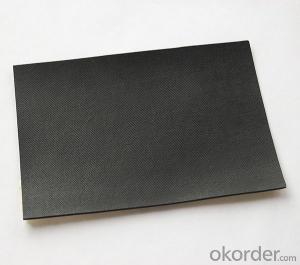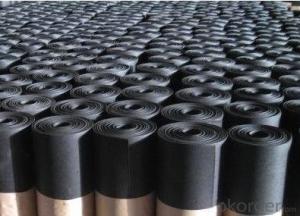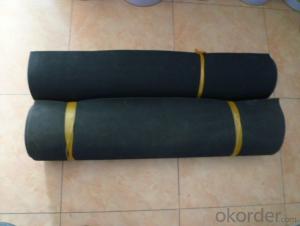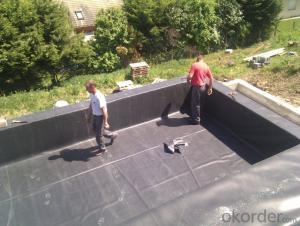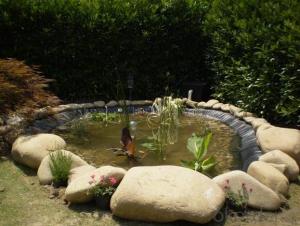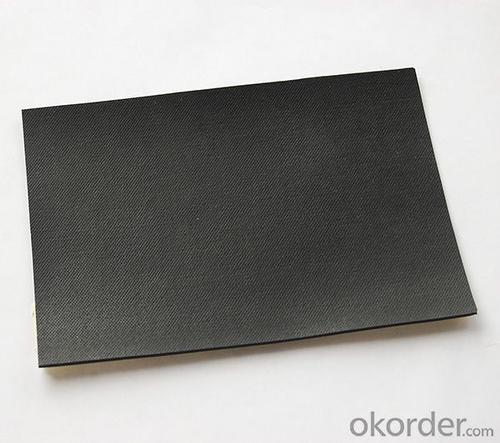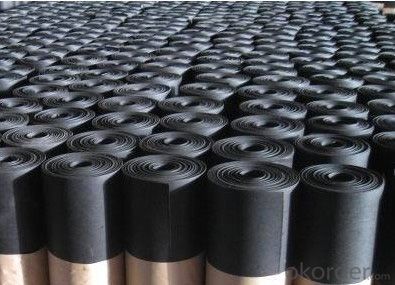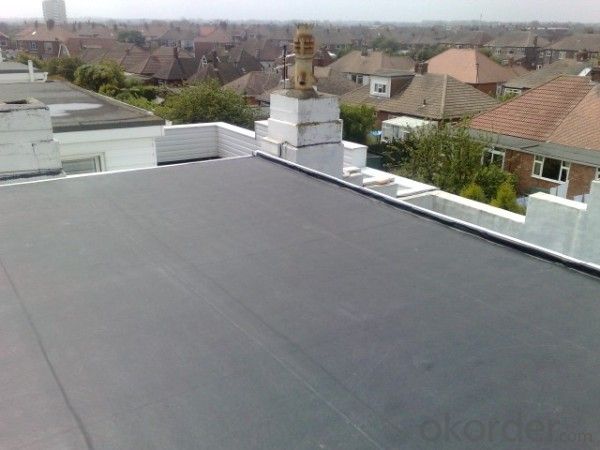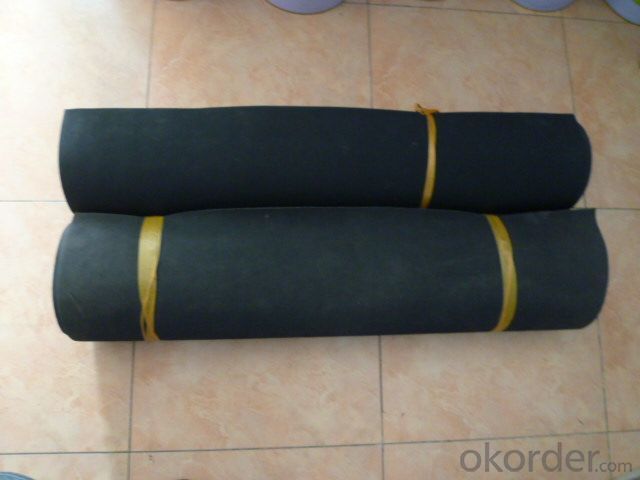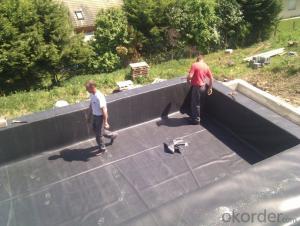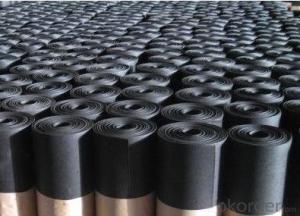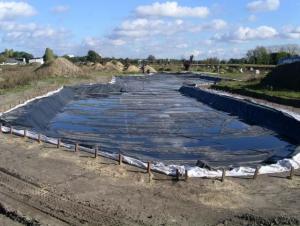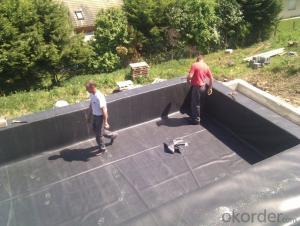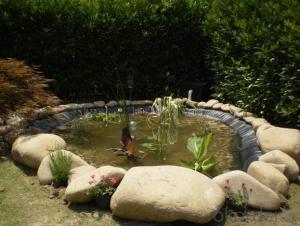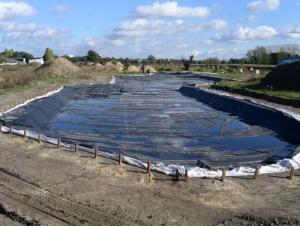EPDM Coiled Rubber Waterproof Membrane for Artificial Pond Landscape
- Loading Port:
- Shanghai
- Payment Terms:
- TT OR LC
- Min Order Qty:
- 50000 m²
- Supply Capability:
- 5000000 m²/month
OKorder Service Pledge
OKorder Financial Service
You Might Also Like
EPDM Coiled Rubber Waterproof Membrane for Artificial Pond Landscape
Description Of EPDM Coiled Rubber Waterproof Membrane for Artificial Pond Landscape:
•EPDM waterproof sheet has excellent anti-ozone-aging performance, able to resist ultraviolet light and corrosion of many chemical corrosive materials in the atmosphere
•It has high tensile strength, high ductility and strong retractility, it has excellent crack resistance, able to effect waterproof function even with tiny vibration of buildings.
• Excellent resistance to ozone, oxidation and sunlight.
• Resistance to chemicals; resistant to most inorganic products.
Main Features of EPDM Coiled Rubber Waterproof Membrane for Artificial Pond Landscape:
A.Polyester based SBS Modified Bitumen Waterproofing Membrane
a. Strong impermeability
b. High tensile strength, elongation, ability to adapt the grassroots shrinkage deformation and cracking
c. Puncture-resistant, broken resistant, tear-resistant
d. The corrosion resistance, resistance to mildew, weathering good
e. Construction convenient, hot-melt can be operated Four Seasons Construction, reliable joints
Specifications of EPDM Coiled Rubber Waterproof Membrane for Artificial Pond Landscape:
| Material | EPDM Rubber |
| Size | 1.2m (width)*20m (length) or customized, weldable type 2.05m or 4m width |
| Thick | 1.2mm, 1.5mm, 2.0mm |
| Type | Vulcanized & Weldable |
| Pattern | Non-reinforced (homogeneous) |
| Certificate | ISO9001/14001 |
Applications of EPDM Coiled Rubber Waterproof Membrane for Artificial Pond Landscape:
1. The substratum should be smooth, dry, clean, which can not have loosing and peeling phenomena.
2. Before application, clean up the basic level and eradicate the impurities.
3. Spread out the membrane on the substratum to loose sheet's stress. Use adhesive-glue to paint the substratum and the surface of membrane. When the adhesive is not sticky to hands, pave and press smoothly.
4. When pave the second volume of membrane, extrude 100mm of the edge of overlap of the first roll and do not paint with the adhesive. Pave the membrane on the substratum according to step so as to finish the whole pavement. When paving, do not tighten the waterproof membrane violently.
5. After that, use the special solvent to scrub the overlap joint. When it becomes fully dry , use the sheet glue to paint the both sides of the joint. Paint it again when it gets completely dry. Till the adhesive is not sticky to hands, press it smoothly and solidly.
6. Pay attention to fire prevention during application. Basement construction site shall be equipped with ventilation facilities



IMages of EPDM Coiled Rubber Waterproof Membrane for Artificial Pond Landscape:




FAQ of EPDM Coiled Rubber Waterproof Membrane for Artificial Pond Landscape:
1. What are we supplying?
We are specialized in producing Colorful Asphalt Roof Shingle, SBS/APP modified bitumen waterproof membrane, Self adhesive bitumen waterproof membrane, PVC waterproofing membrane, EPDM rubber roofing membrane, Single Component Polyurethane Waterproof Coating, and Spray Polyurea Waterproof Coating
.
2. How Many years experience do we have?
We have been exported to more than 20 countries in the past 15 years.
3. How long do we usually reply your request?
We always reply our customer within 24 hours.
- Q: Can a waterproofing membrane be used for sewage treatment plants and wastewater facilities?
- Sewage treatment plants and wastewater facilities necessitate robust protection against water infiltration and leakage due to their handling of substantial amounts of wastewater and chemicals. To achieve this, a waterproofing membrane serves as an ideal solution. By creating a seamless and impermeable barrier, this membrane effectively prevents water from entering or exiting the structure. Consequently, the facility's integrity remains intact, and the risk of contamination in surrounding areas is eliminated. Furthermore, the waterproofing membrane also shields the facility's infrastructure from the destructive impact of wastewater and chemicals, thereby prolonging its lifespan and reducing maintenance expenses. Hence, incorporating a waterproofing membrane is an indispensable element in the construction and upkeep of sewage treatment plants and wastewater facilities.
- Q: Polyethylene polypropylene waterproofing membrane forming. Secondary molding, what does it mean? How to distinguish?
- The second compound is, first produced or bought from the market polyethylene film, by heating the polypropylene non-woven composite up. This method is not enough heating, non-woven stickers are not strong, heating is too high, the polyethylene film damage, polyethylene plastic through the second heating to speed up his aging. Further, the polyethylene film for secondary compounding, the proportion of the recycled plastic is too high, and the anti-aging property is lowered.
- Q: Can a waterproofing membrane be used for underground communication vaults?
- Underground communication vaults, usually constructed from concrete or other vulnerable materials, can benefit from the use of a waterproofing membrane. By applying this membrane to the outer surface of the vault, water infiltration can be prevented, safeguarding the vault and its contents. Acting as a barrier, the waterproofing membrane not only defends against water damage but also provides protection against various hazards, including moisture, chemicals, and soil gases. To guarantee its efficiency and long-lasting strength, it is crucial to select a top-notch waterproofing membrane that is specifically designed for underground structures.
- Q: What type of maintenance is required for a waterproofing membrane?
- In order to properly maintain a waterproofing membrane, it is necessary to conduct regular inspections and perform routine maintenance. The first step is to ensure that the surface remains clean and free from any debris that could potentially cause damage to the membrane. It is important to regularly remove any dirt, leaves, or other foreign materials that may accumulate on the surface. Inspect the membrane for any indications of wear, tear, or damage, such as cracks, blisters, or punctures. If any problems are discovered, they should be promptly repaired to prevent water leakage and possible further damage. Furthermore, it is advisable to inspect and maintain the surrounding areas of the membrane, including gutters, downspouts, and drainage systems. It is important to make sure that these components are functioning properly and are clear of any blockages that could compromise the effectiveness of the waterproofing system. Depending on the type of waterproofing membrane used, it may be necessary to periodically reapply a protective coating or sealant. This will help to prolong the lifespan of the membrane and ensure that it remains effective. It is also crucial to monitor the performance of the membrane during heavy rain or snow events. Check for any signs of water pooling or leakage, and promptly address any issues that arise. In conclusion, conducting regular inspections, performing routine cleaning, making prompt repairs, and periodically reapplying protective coatings are essential maintenance tasks to ensure the durability and effectiveness of a waterproofing membrane.
- Q: How does a waterproofing membrane handle exposure to UV radiation?
- Waterproofing membranes are specifically designed to withstand exposure to UV radiation, which is a common environmental factor that can cause deterioration and degradation of materials over time. In order to counteract the damaging effects of UV radiation, manufacturers typically incorporate UV stabilizers and additives into the production of waterproofing membranes. These substances serve as a barrier, either absorbing or reflecting the UV rays and preventing them from penetrating the membrane. Additionally, certain waterproofing membranes may include extra protective layers or coatings that further enhance their resistance to UV radiation. Ultimately, the inclusion of UV stabilizers and protective layers in waterproofing membranes guarantees their ability to endure prolonged exposure to UV radiation without compromising their performance or integrity.
- Q: Can a waterproofing membrane be used for a stadium seating area?
- Certainly! A stadium seating area can indeed benefit from the use of a waterproofing membrane. Such a membrane is specifically designed to safeguard against water intrusion into a structure. Its application in the realm of building construction is widespread, as it shields foundations, roofs, and walls from the detrimental effects of water. In the context of a stadium seating area, it can be effectively employed to prevent water infiltration by being applied to the concrete or any other flooring material. This measure becomes particularly crucial in outdoor stadiums, where rainfall or other forms of moisture can accumulate and potentially result in lasting structural complications. Consequently, the utilization of a waterproofing membrane ensures that the seating area remains impervious to water damage, thereby guaranteeing its durability and the safety of spectators.
- Q: Can a waterproofing membrane be used for concrete bridge decks?
- Yes, a waterproofing membrane can be used for concrete bridge decks. Waterproofing membranes are commonly used to protect concrete structures from moisture and prevent the deterioration caused by water infiltration. By applying a waterproofing membrane on the bridge deck, it can effectively prevent water penetration and increase the durability and lifespan of the concrete bridge deck.
- Q: Can a waterproofing membrane be used on tunnels with communication systems?
- Indeed, tunnels with communication systems can utilize a waterproofing membrane. It is strongly advised to shield delicate communication equipment and wiring from water-induced harm. A waterproofing membrane is specifically engineered to establish a protective barrier against water infiltration, thus averting leaks and seepage. By implementing a waterproofing membrane on the walls and floors of the tunnel, the communication systems can be shielded against possible water-related complications, including corrosion, short circuits, and disruption of signals. It is crucial to select a waterproofing system that aligns with the precise needs and prerequisites of the communication systems within the tunnel to guarantee optimum protection and functionality.
- Q: Can a waterproofing membrane be used for underground stormwater detention systems?
- Underground stormwater detention systems can benefit from the use of a waterproofing membrane. This membrane is specifically designed to keep water out and can be applied to different surfaces, such as concrete, to create a tight seal. This makes it a perfect choice for underground stormwater detention systems where the control and containment of stormwater runoff are necessary. By using a waterproofing membrane, the system can remain completely sealed, preventing any leaks or seepage that could compromise the system's integrity or contaminate the surrounding soil and groundwater. Moreover, the membrane also provides protection to the concrete structure of the detention system, shielding it from the damaging effects of water and other potential contaminants. Consequently, incorporating a waterproofing membrane into underground stormwater detention systems is a dependable and efficient approach to ensuring their longevity and functionality.
- Q: Are waterproofing membranes resistant to freeze-thaw cycles?
- Yes, waterproofing membranes are generally resistant to freeze-thaw cycles. These membranes are designed to withstand extreme weather conditions, including freezing temperatures and the subsequent thawing process. The materials used in waterproofing membranes are often chosen for their durability and ability to expand and contract without compromising their waterproofing properties. This resistance to freeze-thaw cycles ensures that the membranes remain intact and effective in preventing water penetration, even in areas where temperature fluctuations occur frequently.
Send your message to us
EPDM Coiled Rubber Waterproof Membrane for Artificial Pond Landscape
- Loading Port:
- Shanghai
- Payment Terms:
- TT OR LC
- Min Order Qty:
- 50000 m²
- Supply Capability:
- 5000000 m²/month
OKorder Service Pledge
OKorder Financial Service
Similar products
Hot products
Hot Searches
Related keywords
